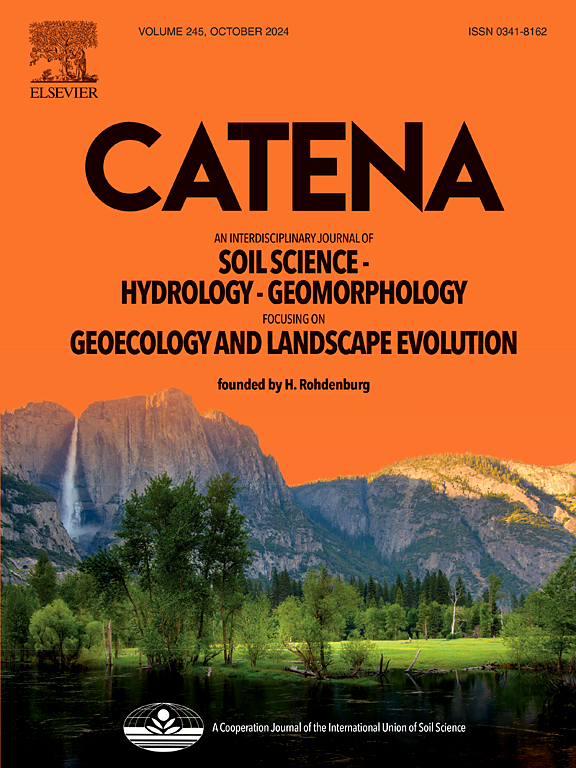Interrill erodibility in relation to aggregate size class in a semi-arid soil under simulated rainfalls
Vaezi, Ali Reza , Eslami, Seyedeh Fatemeh , Keesstra, Saskia
2018-08-01 null null 167(卷), null(期), (null页)
Interrill erodibility can be affected by soil aggregates, especially by those aggregate size classes that are dominant in the soil. In the Water erosion Prediction Project (WEPP) model, interrill soil erodibility (K-i is estimated using very fine sand content. Despite that some studies have indicated an effect of aggregate stability on the K-i information on the relationship between the aggregate size class and K-i and factors controlling it, particularly in semi-arid region is limited. This study was conducted to determine the variation of K-i for different aggregate size classes under various rainfall intensities and evaluation of the WEPP model in estimating the K-i for different aggregate fractions. Five aggregate size classes (0.25-2, 2-4.75, 4.75-5.6, 5.6-9.75 mm, and 9.75-12.7 mm) were separated from a sandy clay loam soil sampled in an agricultural land and put in laboratory flumes of 100 cm x 50 cm. The flumes were placed on a 9% slope and exposed to ten sequential rainfall simulations varying from 10 to 60 mm h(-1) for 30 min. The K-i of each aggregate size classes was determined using the interrill sediment delivery rate and compared this with the values estimated using WEPP. All physico-chemical properties were also determined in the aggregate size classes. Organic matter content in the aggregate size classes was very low (0.65-0.73%) and didn't show strong relationships with the aggregate stability and hydraulic conductivity, whereas clay was major factor controlling determining these properties for the different aggregate fractions. Significant differences were found among the aggregate size classes in clay content (P < 0.05), aggregate stability measured using both wet-sieving method (P < 0.05) and water drop test method P < 0.05, saturated hydraulic conductivity (K-s), and measured K-i (P < 0.05). The measured K-i was about 34 and 90 times bigger than the estimated K-i for the fine aggregates and coarse aggregates, respectively. The fine aggregates showed higher susceptibility to interrill detachment with increasing rainfall intensity as compared with the coarse aggregates. Significant decrease was observed in the measured K-i with increasing the aggregate size which was associated with increases in clay content, aggregate stability and K-s. The stability of aggregates against raindrop impact (CND) was an important indicator describing the effect of aggregate size on the interrill erodibility in semi-arid soils. Therefore, this indicator can be taken into account as a soil structure measure to develop a proper equation for estimating interrill erodibility (K-i) for agricultural lands. The minimum use of tillage practices is essential to prevent aggregate breakdown and control interrill erosion in semi-arid regions.
相关推荐
- The Effects and Contributions of Ecological Factors on Soil Carbon, Water and Nutrient Storages Under Long-Term Vegetation Restoration on the Eastern Loess Plateau [2018-08-01]
- Comparison of spectral and spatial-based approaches for mapping the local variation of soil moisture in a semi-arid mountainous area [2018-08-01]
- Impact of flight altitude and cover orientation on Digital Surface Model (DSM) accuracy for flood damage assessment in Murcia (Spain) using a fixed-wing UAV [2018-08-01]
- Using hydrological connectivity to detect transitions and degradation thresholds: Applications to dryland systems [2018-08-01]
- Estimating the soil respiration under different land uses using artificial neural network and linear regression models [2018-08-01]



